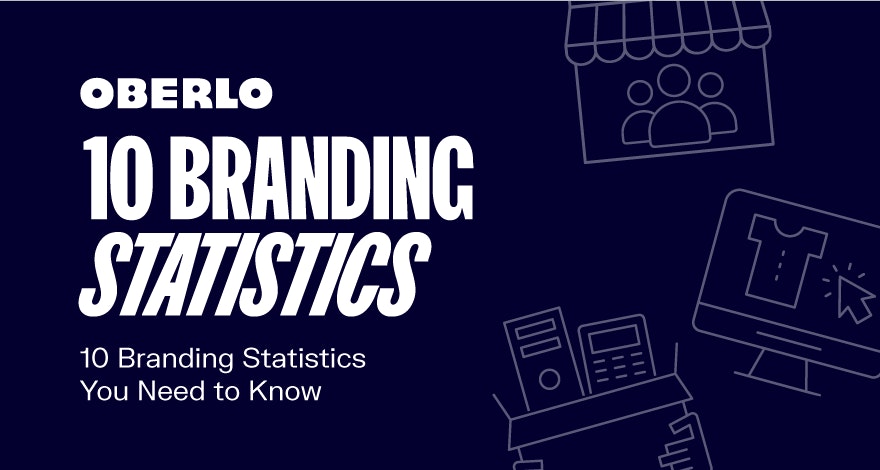Your brand is your chance to tell your customers a story.
Branding is not just the logo you design, the font you use, or the products you sell. It’s all these things and much more. It’s the customer experience you provide. It’s the philosophy you embrace and the culture you adhere to. A brand is a feeling that a business evokes in customers—it’s what makes your business unique.
And when it comes to online businesses, branding is no different. Have you ever visited a website and were instantly confused? Maybe you weren’t sure what they were selling or what service they offered. A lot of companies have a hard time trying to explain what they do, and how they do it. And nobody wants to buy what they don’t understand.
Your brand strategy should guide how and what you communicate with your customers. As a business, you should strive to humanize your brand. You need to think in terms of the value provided to your customers. Your brand can help differentiate your business from competitors. It can help set you apart and market your distinctive qualities.
But, a brand isn’t built overnight. It takes time. And more often than we might think, it needs a little push in the right direction from our side. That's why we put together this guide on how to build a brand. Give your brand the push in the right direction that it needs.
Your brand shapes your business, and how people view it. And there are many factors that shape your brand. So if you’ve been curious about why branding matters, and what your customers think about it, we’ve got you covered. Let’s jump into the top 10 branding statistics that you should know about in 2023.
Post Contents
- 1. Authenticity Is Important for Brands
- 2. Consumers Buy Based on Trust
- 3. Color Matters for Brand Recognition
- 4. First Impressions Matter for Your Brand
- 5. Importance of Brand Consistency
- 6. Your Brand Needs to Be Transparent
- 7. Consumers Want Brands to Be Vocal About Social Issues
- 8. Customer Service Helps Brands to Stand out From the Crowd
- 9. Being Meaningful Is Good for Business
- 10. User-Generated Content is Crucial for Brands
- Summary: Top Branding Statistics You Need to Know in 2023
- Want to Learn More?



1. Authenticity Is Important for Brands
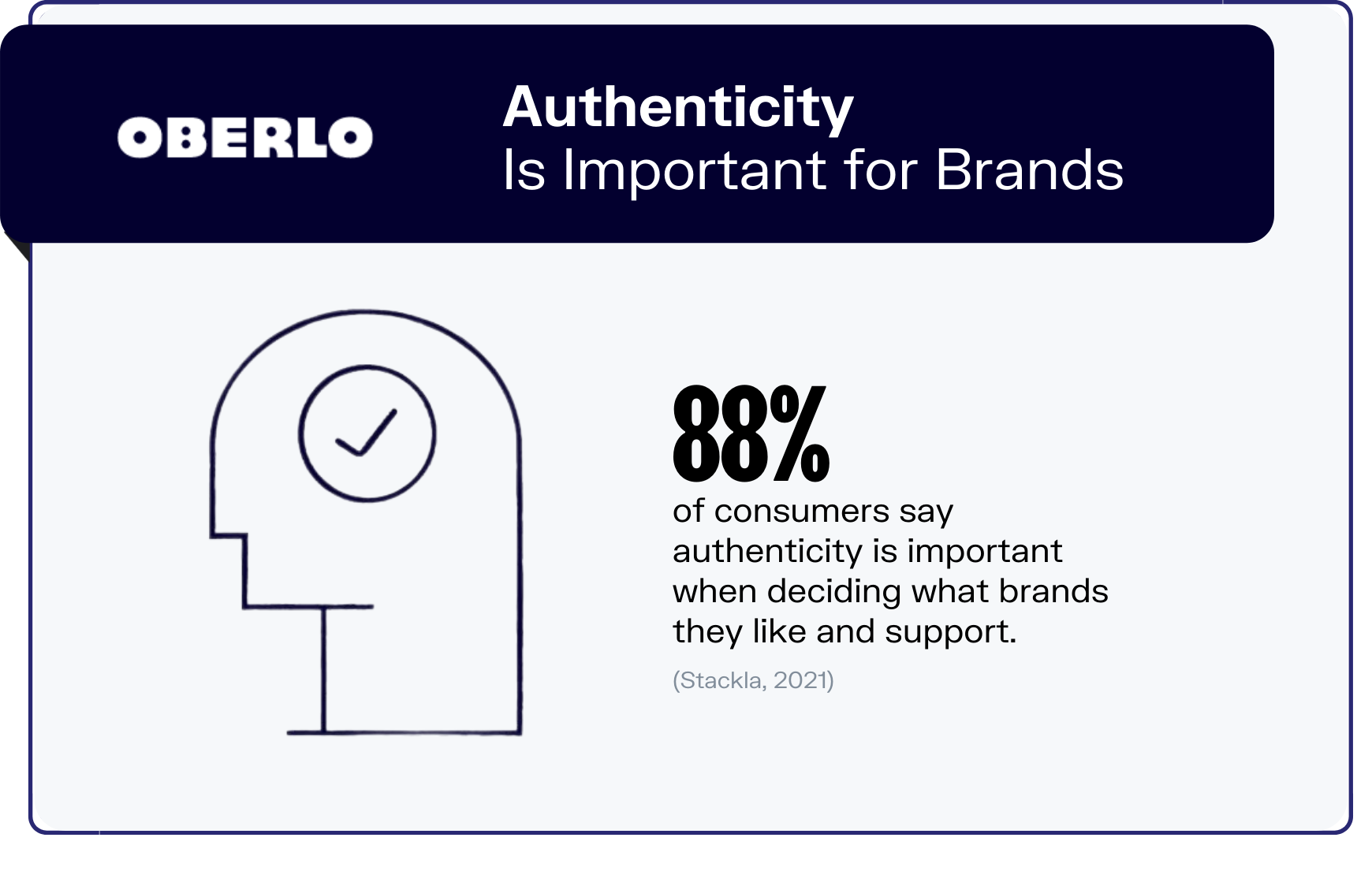
It’s the age of authenticity and brands need to get real if they want to connect with their audience. 88 percent of consumers say that authenticity is a key factor when deciding what brands they like and support (Stackla, 2021).
→ Click Here to Launch Your Online Business with Shopify
Consumers want brands to be honest. So it’s not surprising that consumers expect the companies they buy from to be authentic in the way they present themselves and carry out their business. But brand authenticity is a relatively recent concept, mainly pushed forward by millennials, who tend to be more vocal about their demand for authenticity.
This demand extends to Gen Z as well. Millennials and Gen Z consumers expect businesses to care about more than just their profits, and if they fail to see that from a brand, they won’t hesitate to look for another brand that does.
Brands can start being more authentic by being transparent and consistent in their branding and messaging by having values that they can stay true to, and, most importantly, by being honest. This way, they’ll be able to build long-lasting relationships with their customers and prospects.
2. Consumers Buy Based on Trust
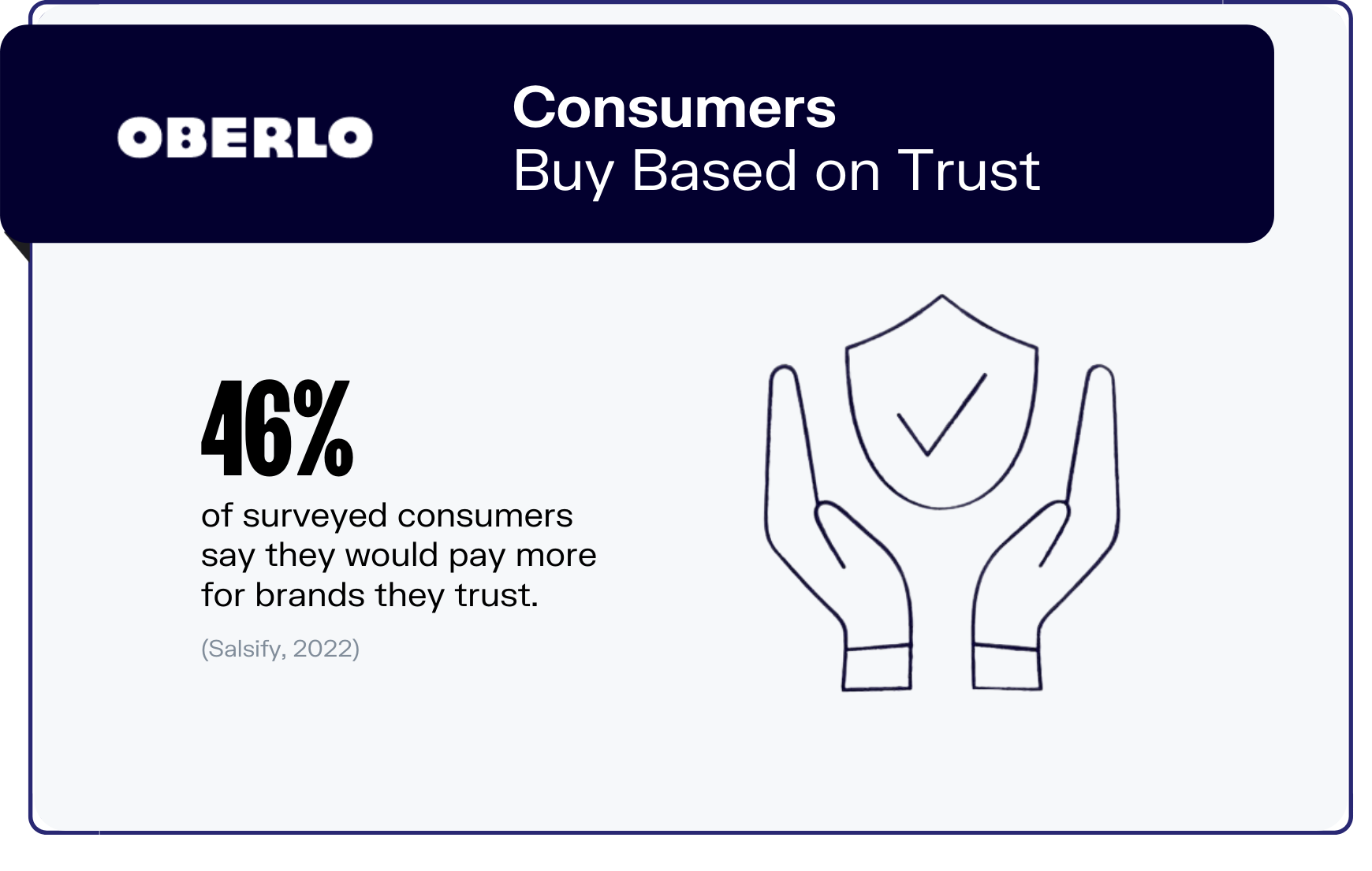
When consumers buy from brands, they are essentially placing their trust in them. According to a survey, in the United States, 46 percent of consumers say that they would pay more to purchase from brands they can trust (Salsify, 2022). As a matter of fact, the percentage of consumers that feel this way is similar across other major markets, including Great Britain and France.
It’s safe to say that when brands build trust, consumers reward them. This can be in the form of building long-lasting relationships with them and sticking to the same brand through thick or thin. Consumers today care about more than just the product experience. They also have growing concerns about the customer experience that brands promise, and, increasingly, about a brand’s impact on society.
In the long run, if brands are able to build trust with their customers, they will gain their attention as well. So, as we saw with the first branding statistic, the same logic applies here. If brands are honest and authentic with customers, it’ll help build a trust-based relationship.
3. Color Matters for Brand Recognition
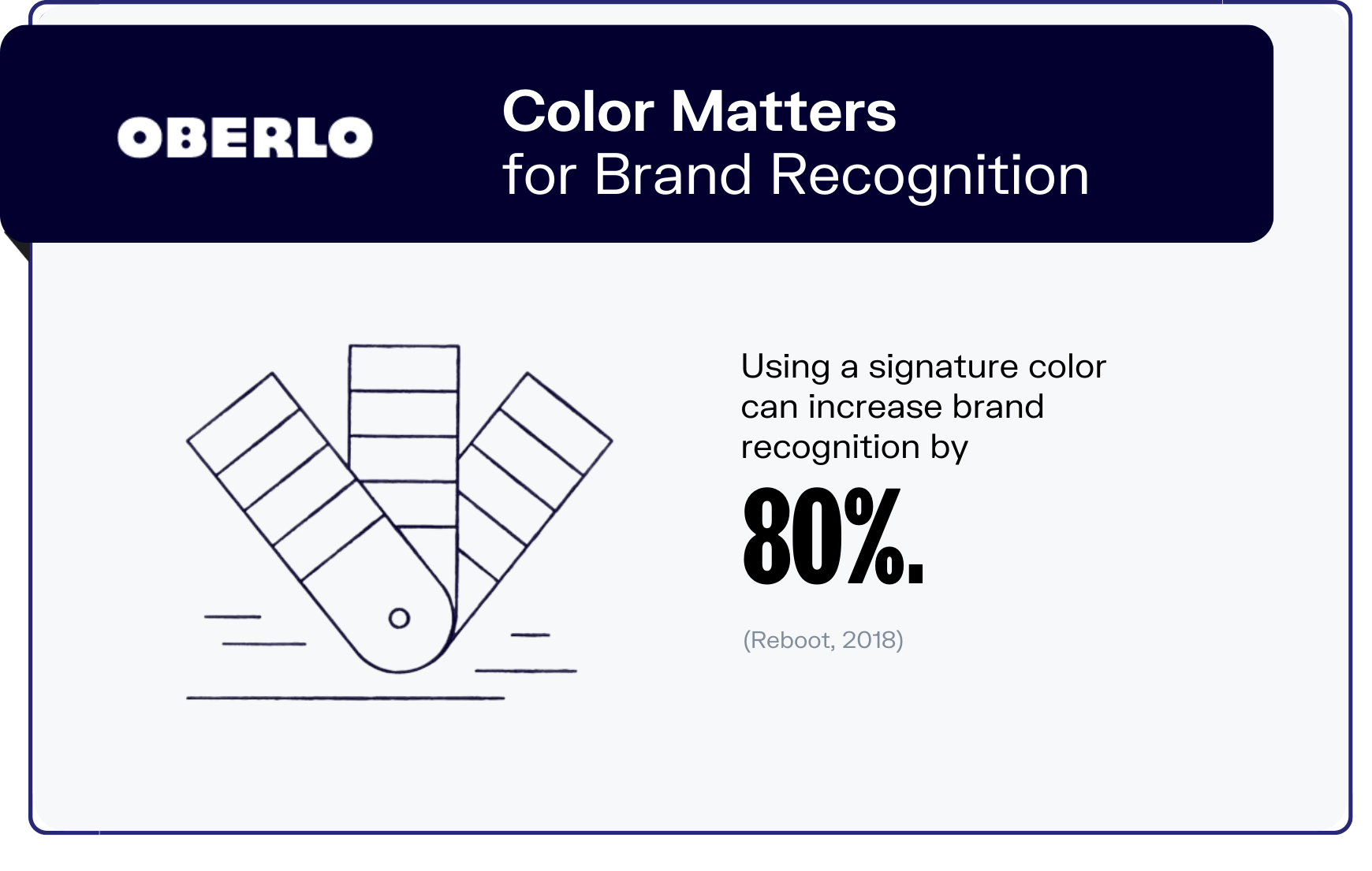
Colors matter when it comes to marketing. Choosing brand colors wisely can impact how people perceive your brand. In fact, using a signature color can increase brand recognition by 80 percent (Reboot, 2018).
Colors have a unique way of making you feel certain emotions. It’s for the same reasons that when colors are selected in marketing, they can have a drastic effect on what consumers associate with your brand. If you’re thinking about your brand image, and how you want to represent your business, you could use the right colors to enhance your brand’s visual representation.
Let’s take a look at currently established brands. Take a moment and think about which brand you most associate with red and yellow, or with the colors blue and yellow. Did you think about McDonald’s for the first one, and IKEA for the second one? We did too.
Use colors to your advantage to express your brand in the best possible way. And if you’re wondering how different color meanings can affect your brand, we’ve got you covered. Dive into our piece about color psychology and branding.
4. First Impressions Matter for Your Brand
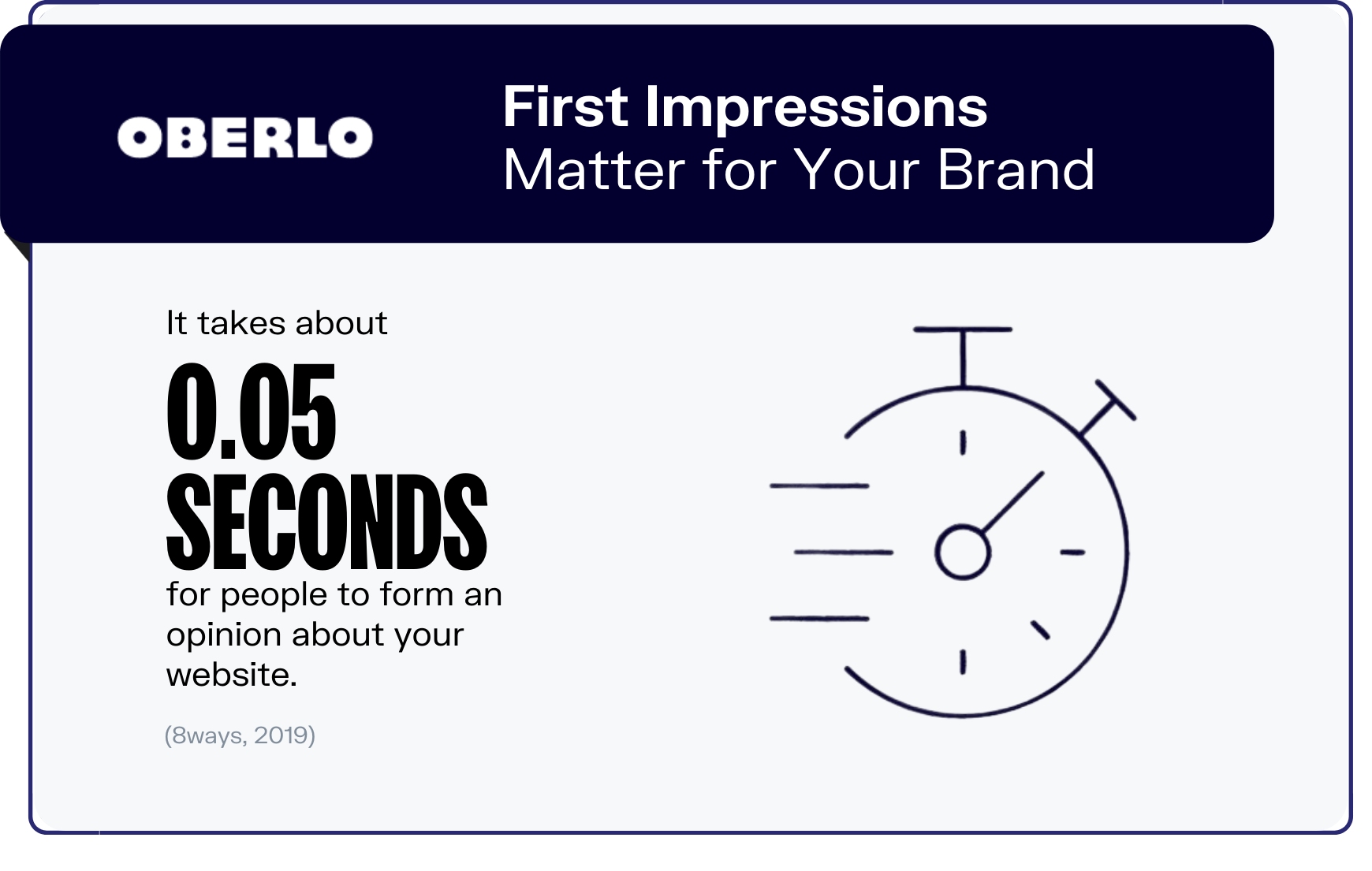
It takes 1/10th of a second to form a first impression of someone. But we know that people are way more than just their first impressions. When it comes to your brand, it’s better not to risk it. It takes about 50 milliseconds (0.05 seconds) for people to form an opinion about your website (8ways, 2019).
How many times have you stumbled across a website and had a feeling that it hadn’t been touched since the 90s? We’re guessing more than a few.
If you’ve got an online store or your business exists online, it’s how you present yourself to people virtually. If you don’t take care of your website, chances are you’re losing your customer's attention.
So what can you do to make sure you nail your brand’s first impression? To start with, make sure you carefully choose your colors, spacing, font, amount of text, and structure. Think about the content on your website. Is it optimized? Or is there room for improvement? Are you happy with how your logo looks or how it’s positioned? Maybe you can make improvements to the images on your website? Try to make sure people have a comfortable experience when they visit your website. Make it easy for them to search for what you have to offer. Present them an easy navigation menu. Make sure the time they spend on your website is an enjoyable one.
5. Importance of Brand Consistency
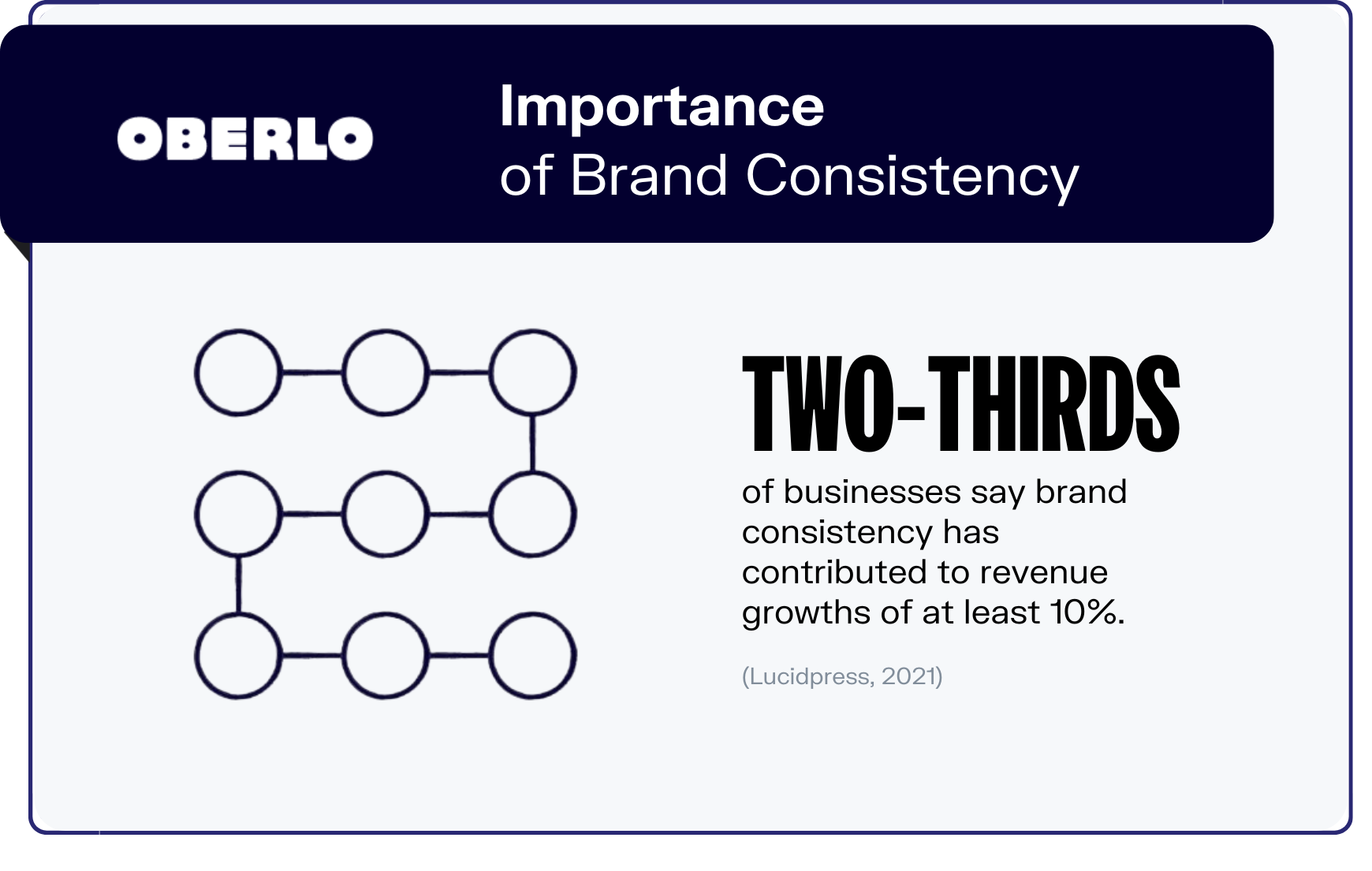
Brand consistency is making sure that your brand values, image, and messaging are consistent across all channels. Customers appreciate it when a business has a consistent brand. In fact, more than two-thirds (68 percent) of businesses say brand consistency has contributed to revenue growths of 10 percent or more (Lucidpress, 2021).
Consumers want to know your business, and one of the best ways is through your branding strategy. Keeping a consistent brand image helps customers position you as a business, and it makes it easier for them to remember you or associate with your brand.
When customers know your brand, they will be able to trust your brand. Utilizing brand guidelines to keep your brand voice consistent across all channels gives your customers a consistent experience with your brand. In a way, they’ll know and feel that your messaging is true because you’re sticking with it. This way, your customer remembers you. When they see your logo or your branding, they’ll know what to expect, and what to feel. To create a relatable identity, you can’t ignore brand consistency.
Having a strong brand will not only improve your chances of getting new customers, but also increase employee motivation, and provide your business with a unified direction. For you to succeed in building a strong brand image, you need to understand your customers. And in doing so, you need to humanize your brand. You need to think of your brand as something your customers can relate to and identify with.
6. Your Brand Needs to Be Transparent
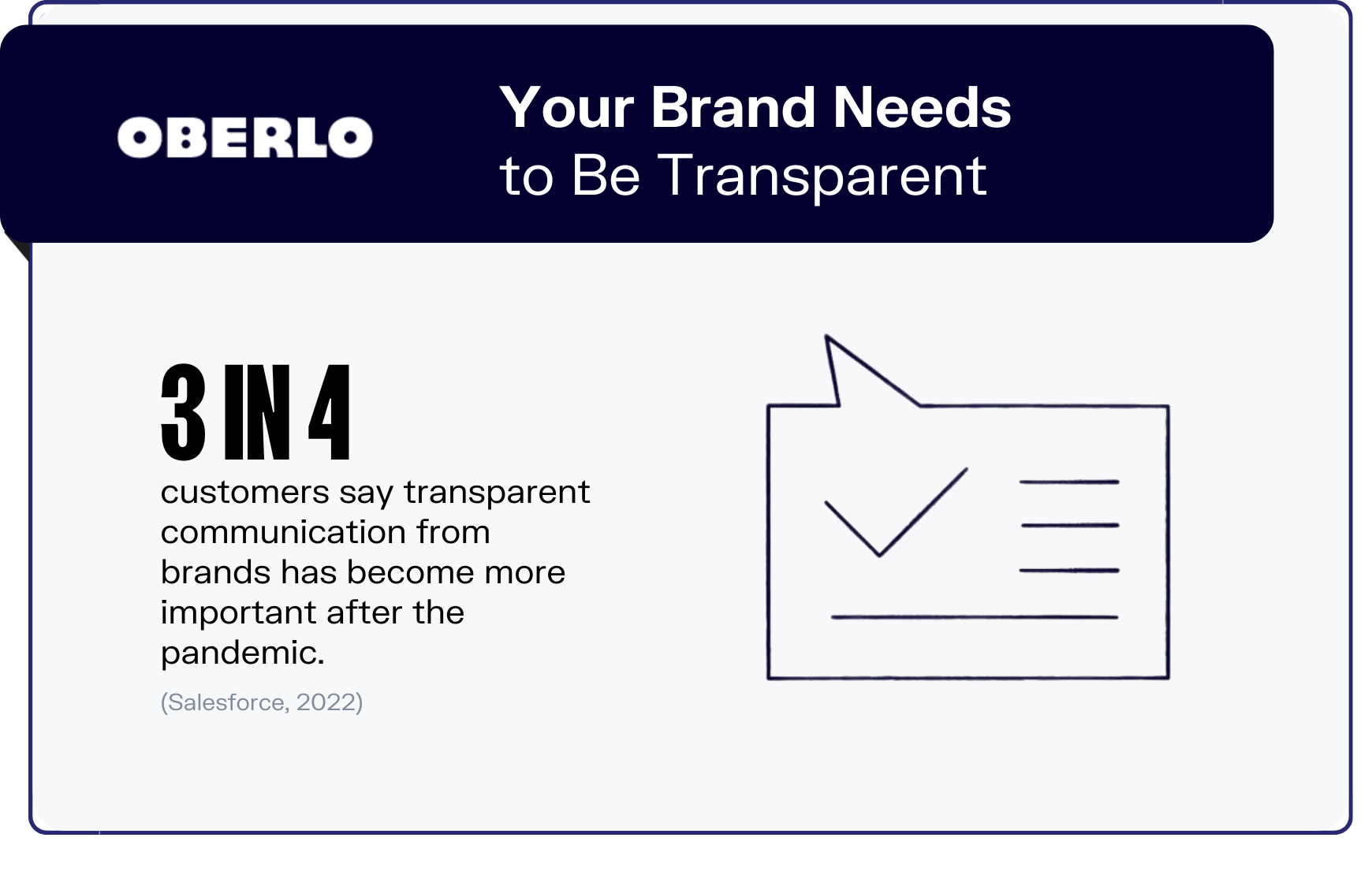
With trust comes transparency, and vice versa. According to a survey, three in four consumers (74 percent) say transparent communication has become more important after the COVID-19 pandemic (Salesforce, 2022). This includes transparency in communication and a personal touch. People are getting increasingly frustrated with being treated as a case, instead of a human being, and we can’t blame them. Transparent communication has never been more important.
Brands need to be clear and authentic. If brands support each and every cause that they don’t even feel strongly about, they might end up being perceived by consumers as inauthentic. Consumers don’t appreciate insincere attempts from brands showing that they care. Companies need to establish an emotional connection with their consumers and be true to who they are as a business. That’s why transparency not only helps to maintain current customers, but it also helps to attract potential customers.
In the era where people tweet, leave reviews, and share all their thoughts with a click of a button, people can find out everything they want to know about a brand. This puts brands in an increasingly important position to embrace brand transparency.
7. Consumers Want Brands to Be Vocal About Social Issues
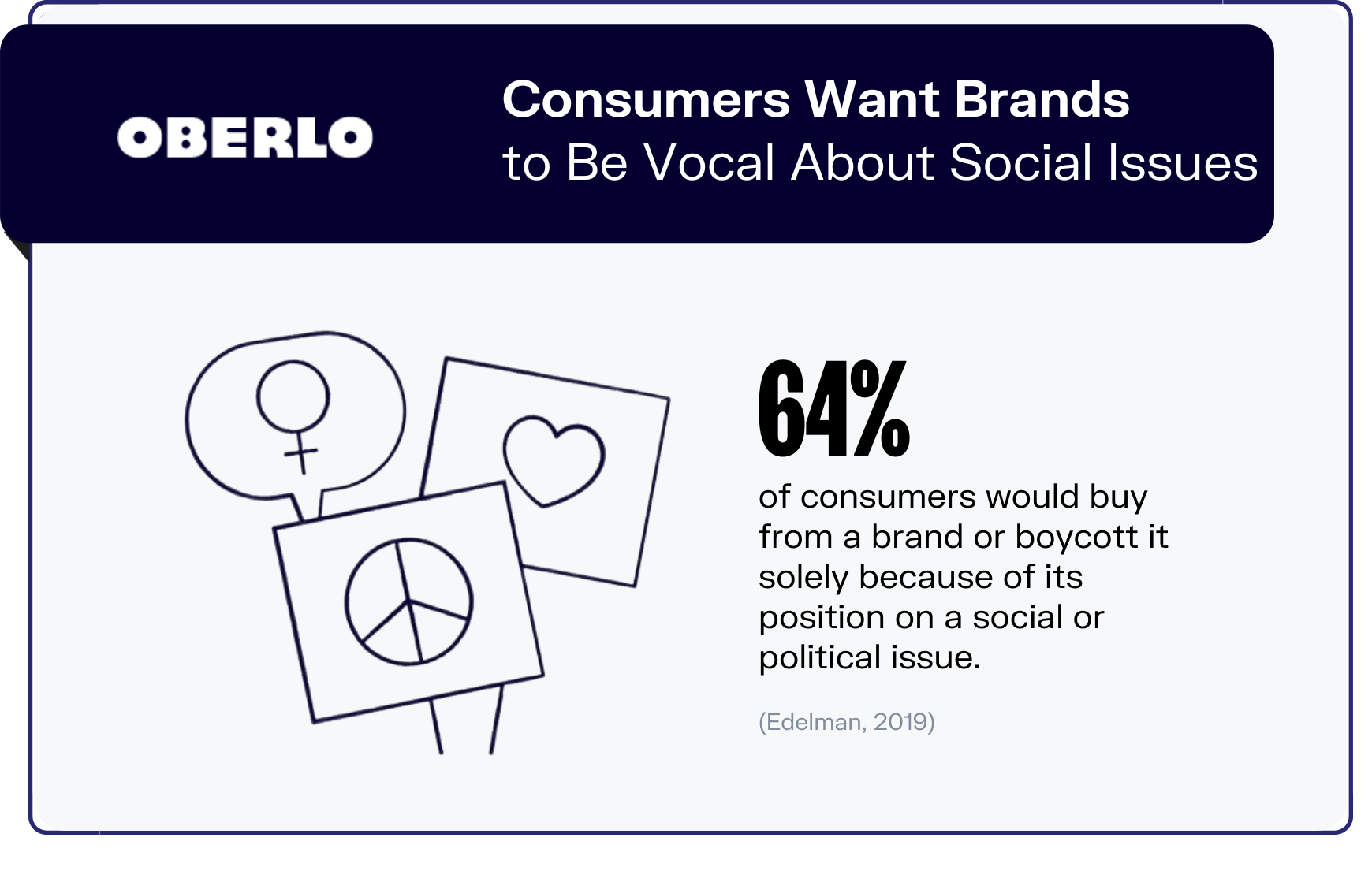
Most consumers want brands to take a stand on social or political issues. As a matter of fact, two-thirds (64 percent) of consumers around the world said that they would buy from a brand or boycott it solely because of its position on a social or political issue (Edelman, 2019).
But that also doesn’t mean that brands should be vocal about matters that they don’t truly believe in. As we’ve mentioned, it’s important to stay realistic and to be transparent. Customers see through brands who are faking their interest in social issues and are also keen to follow up on any promises that a brand makes—publicly.
Some brands might see this as a tricky situation, as taking a stand can mean alienating a certain group of consumers. But in the social era that we’re living in today, they also risk putting themselves in danger if they turn a blind eye to social matters. That’s why, in any case, we refer back to our previous statement about the importance of being transparent.
8. Customer Service Helps Brands to Stand out From the Crowd
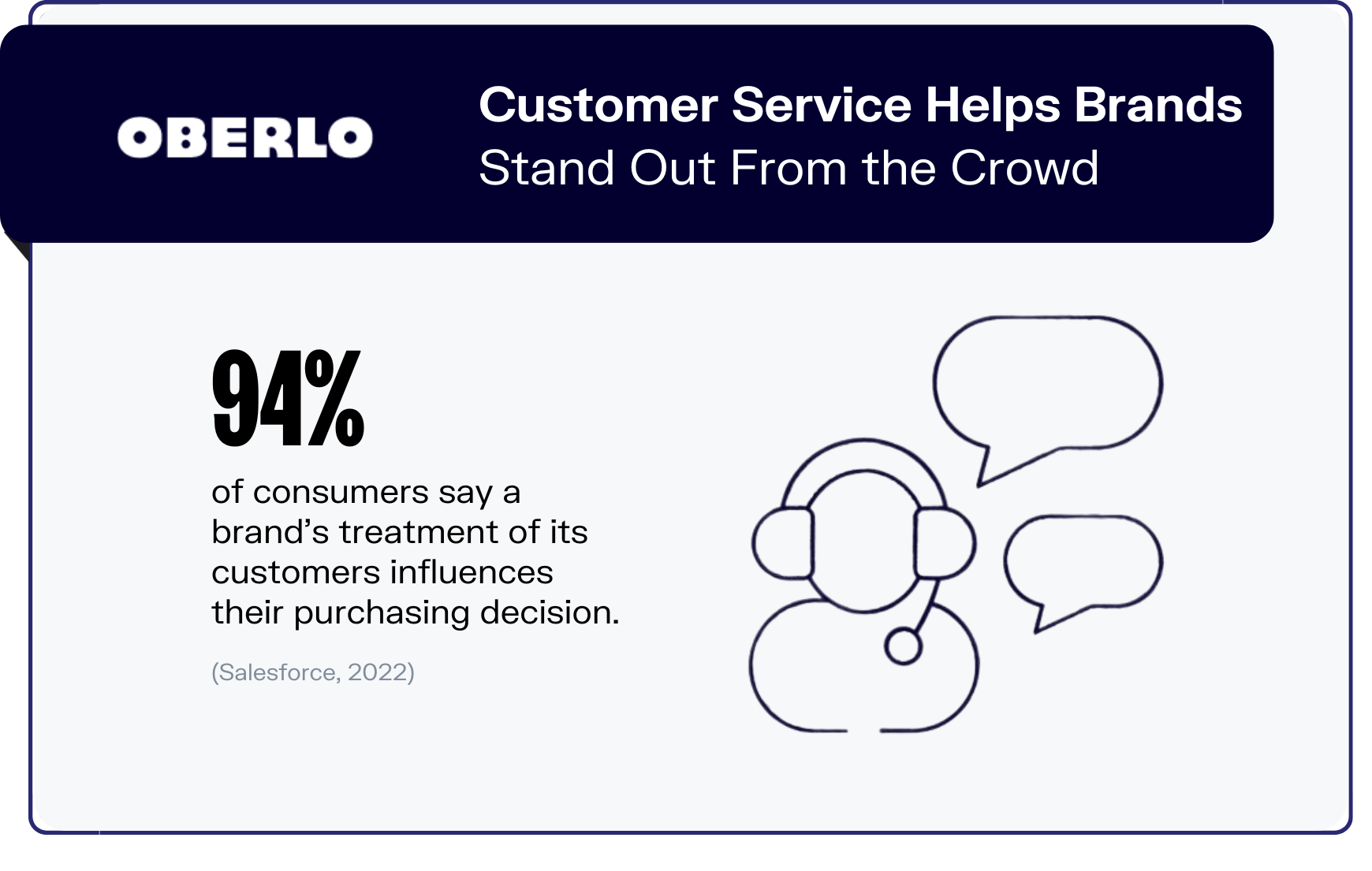
With competition levels soaring, it seems difficult to stand out from the crowd. As a brand, you can take a few extra steps to make sure you remain positively etched in your buyers’ minds. Extraordinary customer service is one thing you can offer. A survey shows that 94 percent of consumers say a brand’s treatment of its customers influences their decision to purchase (Salesforce, 2022).
Customer service includes many different aspects of the customer’s buying experience. For brands, this could mean providing convenience, a friendly approach, and extra-mile services when attending to customers. You can go a long way by simply adding a human element to your customer service and remembering your customer’s needs and personalizing your approach to deal with each customer.
But customer service doesn’t just end when a purchase is made. It also includes post-purchase coordination with customers by helping them with any refund, return, or product queries they may have.
Customers love it when you understand their buying habits and their needs, instead of just nailing their names in the subject lines of the emails you send out to them. If your brand can customize the experience for individual customers, you’ll have a higher chance of winning and retaining customers.
9. Being Meaningful Is Good for Business
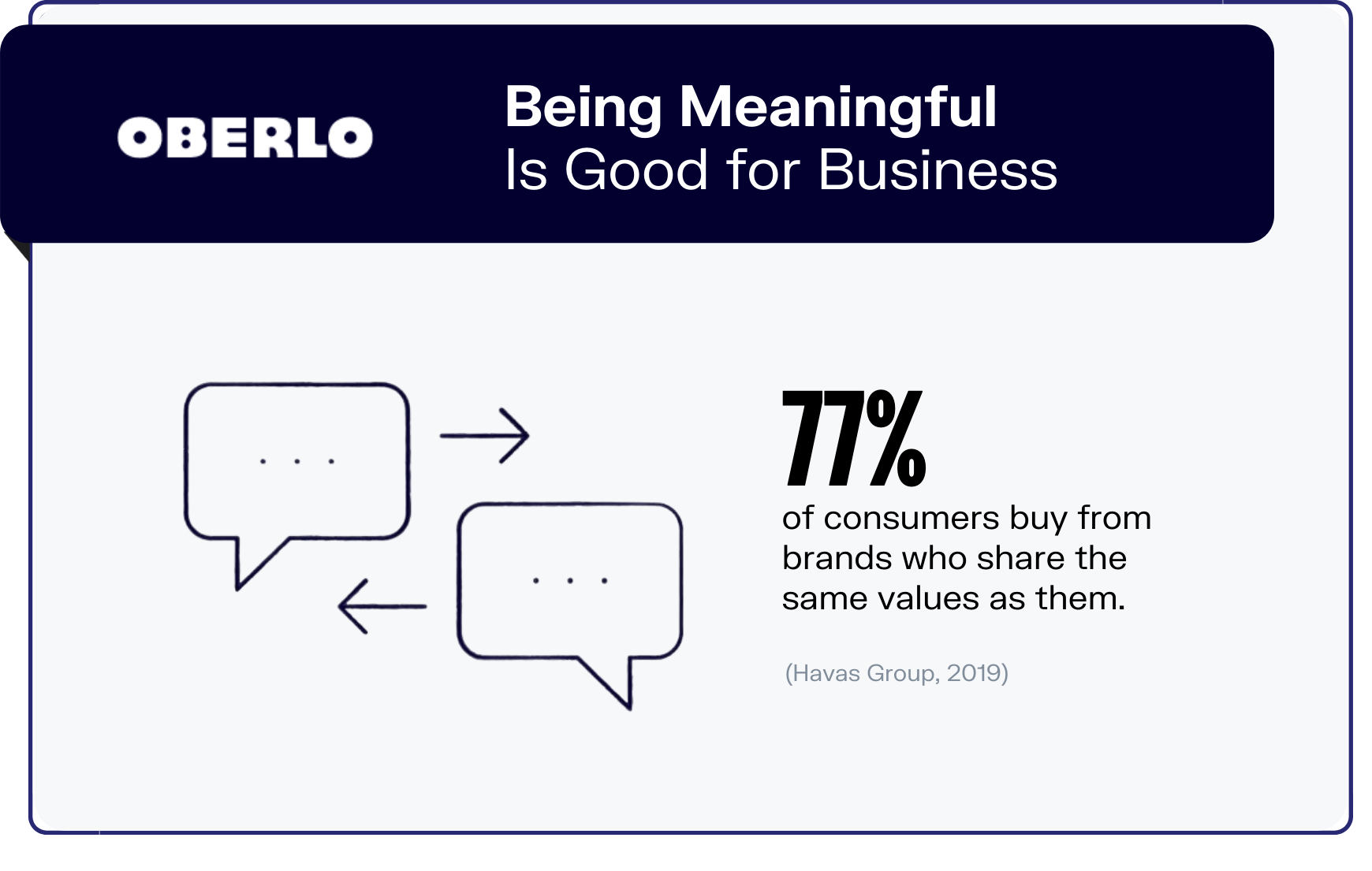
We’ve previously covered that it’s important for a brand to stand for something other than a profit motive. And here’s another statistic to back that up: 77 percent of consumers buy from brands that share the same values as they do (Havas Group, 2019). The purpose of a brand is to make it easier for customers to make decisions. And to build a brand strategy, it’s important to understand your target audience. Understanding what is meaningful to them is the first step toward forming a meaningful brand.
You may be wondering, what makes a brand meaningful? A meaningful brand is defined by its overall impact. This includes the impact they have on their direct customers, as well as the surroundings. The relationship between a brand and its audience has changed rapidly over the years. It’s no longer enough for a brand to care solely about its customers. In fact, brands need to also address what their customers care about. Customers want brands to be genuine and care about purposes that are broader than just products or services.
Businesses need to work on humanizing their brands, by speaking in the way that would most appeal to their audience. A great place to start would be for brands to represent their company and values clearly to their audience. Maintaining a consistent brand image and messaging is important for customers to understand what the business stands for.
10. User-Generated Content is Crucial for Brands

The impact of influencer content has been declining in favor of user-generated content. User-generated content includes any type of content such as images, comments, reviews, videos, and so on that have been posted by users on online platforms such as social media.
In fact, 79 percent of people say that user-generated content highly impacts their purchasing decisions (Stackla, 2021). This makes sense as consumers today have more ways than ever before to discover and research new brands and products.
Increasingly, consumers are finding more ways to carry out their own research online by looking at what other consumers have experienced and shared. For instance, visual content is highly valued by customers when it comes to travel or dining experiences.
It’s also interesting to note that the same research claims that celebrities have less influence on consumer decision-making. Only ten percent of customers consider influencers’ content to be authentic and just nine percent say it impacts their purchasing decisions.
Conclusion
A brand is a story. It’s a feeling. A perception. But most importantly, a brand is what your business shapes it to be.
Your brand should stand for what your business feels.
Building your brand image and working on your brand strategy should be something you have in mind all throughout your journey as a business owner. Make sure that you establish trust and authenticity through your brand. Let your brand convey your values and beliefs, and do it in a way that your customers believe you, and trust in you.
As we’ve said before, your brand is your chance to tell your customers a story. Make it one that counts.

Summary: Top Branding Statistics You Need to Know in 2023
- 88 percent of consumers say authenticity is important when deciding what brands they like and support.
- 46 percent of surveyed consumers say they would pay more for brands they trust.
- Using a signature color can increase brand recognition by 80 percent.
- It takes about 50 milliseconds (0.05 seconds) for people to form an opinion about your website.
- Two-thirds of brands say brand consistency has contributed to revenue growths of at least 10 percent.
- Three in four customers say transparent communication from brands has become more important after the pandemic.
- Two-thirds (64 percent) of consumers around the world said that they would buy from a brand or boycott it solely because of its position on a social or political issue.
- 94 percent of consumers say a brand’s treatment of its customers influences their purchasing decision.
- 77 percent of consumers buy from brands that share the same values as they do.
- 79 percent of people say that user-generated content highly impacts their purchasing decisions.



Want to Learn More?
- The Ultimate List of Small Business Software & Tools
- The 8 Best Wix Alternatives: Which Is Right for You?
- 10 Best Squarespace Alternatives to Consider
- BigCommerce vs Shopify: Which One Is Better?
Is there anything else you’d like to know about Branding statistics and wish was included in this article? Let us know in the comments below!
